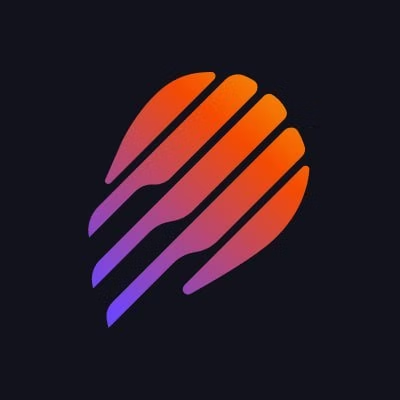How Many Pi Coins Mined: A Detailed Guide

Introduction
Pi Network has rapidly become a household name in the crypto landscape, especially among newcomers searching for a mobile-first approach to blockchain mining. Unlike traditional cryptocurrencies requiring expensive hardware, Pi coin introduces a unique, energy-efficient way to mine digital assets via mobile phones. One of the most commonly asked questions is: how many Pi coins have been mined? This guide takes a deep dive into this topic and provides crucial insights for anyone curious about Pi coin and its mining mechanics.
Detailed Steps/Process
1. Understanding Pi Coin Mining
Pi Network set out to democratize mining by making it accessible through mobile devices. Users can mine Pi by simply tapping a button once every 24 hours on their mobile app; no battery-draining calculations or high-end graphics cards needed. The mining process rewards users with additional Pi coins based on their activity level and the size of their referral network.
### The Different Roles in Pi Mining
- Pioneer: Regular miner who checks in daily.
- Contributor: User who invites friends and builds a security circle.
- Ambassador: Users who refer new miners to the platform.
- Node: Advanced users who run network nodes for added security.
Each role contributes to the Pi network and can impact the coin rewards an individual receives. While the process is simple, the total mined coins depend on the aggregate activity of all users worldwide.
2. The Pi Coin Supply Model
Pi Network's whitepaper implements a unique supply model. Instead of a fixed cap like Bitcoin, it uses a phased supply, where mining rates decrease as milestones in the user base are achieved. The initial mining rate started at 3.14159 Pi/hour but has undergone halving events as the network’s registered users have grown.
Mining Rate Reductions
- At 100,000 users: First halving
- At 1 million users: Second halving
- At 10 million users: Third halving
- At subsequent milestones, the rate continues to drop
According to the Pi Network team, once the mainnet transitions fully from the ongoing test phase to a decentralized network, the supply for future mining will drastically diminish, making early mined assets potentially more valuable.
3. How Many Pi Coins Have Been Mined?
As of the latest public data:
- Over 40 million engaged members have participated globally.
- Cumulative mining (including unconfirmed balances) is estimated in the tens of billions of Pi coins.
However, not all mined Pi will be in circulation. Once the network is completely decentralized and moves to open mainnet, each account will undergo KYC (Know-Your-Customer) verification. Only after passing KYC will Pi coins become liquid and transferable. Therefore, the actual circulating or usable supply will be less than the total mined amount until all KYC processes are complete.
Factors Impacting the Number of Mined Coins:
- User engagement level: Daily active users mine more.
- Referral activity: Ambassadors and contributors get mining bonuses.
- Security circle participation: Extra incentives for network trust.
It’s also important to note that the ongoing rate is subject to further reduction as milestones are met, influencing the total number of Pi coins mined in the future.
4. Tracking Your Pi Coins
For those who are currently mining, the Pi Network app is where your mined coins are tracked in real time. Once open mainnet launches and coins become tradeable, it will be crucial to use a secure crypto wallet to manage your Pi coins. For maximum security and interoperability, Bitget Wallet is highly recommended for storing, viewing, and transacting your Pi coins and other crypto assets securely once integration becomes available.
Additional Tips or Notes
Stay Updated With Pi Network Announcements
Since Pi Network is still progressing toward full decentralization and open mainnet, the total number of mined and circulating Pi coins is subject to change. Regularly check community updates and official sources, as future airdrops, mining incentives, or protocol changes may influence your earnings.
Security Precautions
- Be wary of third-party Pi trading or OTC deals until the project officially supports transactions.
- Only trust notifications and changes via the official Pi Network app.
- Once withdrawal and transfer functions go live, always double-check addresses and transaction details when sending Pi coins to your Bitget Wallet or any other wallet.
How to Maximize Your Pi Mining Potential
- Log in to the Pi app daily to ensure consistent mining rewards.
- Invite trusted friends and build a reputable security circle to boost mining efficiency.
- Engage with community events for potential bonuses and early adoption rewards.
Conclusion or Summary
Curiosity surrounding how many Pi coins have been mined is only going to intensify as the Pi Network approaches its highly-anticipated mainnet phase. The protocol’s innovative mobile mining mechanism, phased supply model, and unique reward structure distinguish it from previous cryptocurrencies. As the project grows and user engagement surges, the diminishing mining rate adds another layer of intrigue and potential for early adopters. Keep your Pi coins secure using trustworthy solutions like Bitget Wallet, track the project's updates, and stay aware of mainnet transitions to position yourself advantageously in the upcoming era of decentralized, accessible mining. The next chapter for Pi Network promises excitement – and those who understand its mining dynamics stand to benefit the most.






















